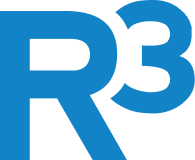The cloud has transformed how businesses manage their tech stack and their data. The benefits of a cloud environment have likely been hammered into your head by now but, in a nutshell, shifting to the cloud drives innovation, scalability, and agility. Azure, Microsoft’s cloud computing platform, offers scores of services and resources to support diverse workloads.
However, as organizations expand their footprint in the cloud, managing costs becomes a critical concern. Without proper optimization strategies, cloud expenditures can spiral out of control, impacting profitability and hindering growth. To address this challenge, adopting Azure cost optimization best practices is imperative. Let’s explore some effective strategies to optimize Azure spending and maximize ROI.
Here are 12 tips to ensure your Cloud Adoption journey isn’t sabotaged by soaring, unexpected costs:
- Rightsize Resources:
Analyze resource utilization patterns and rightsize your Azure instances accordingly. Downsizing over-provisioned virtual machines (VMs) or switching to reserved instances can significantly reduce costs while ensuring optimal performance. - Implement Auto-scaling:
Configure auto-scaling for your Azure resources to dynamically adjust capacity based on demand fluctuations. This ensures efficient resource utilization while preventing over-provisioning during peak hours. - Utilize Azure Cost Management Tools:
Leverage Azure Cost Management + Billing to gain insights into your cloud spending. Monitor usage patterns, set budgets, and utilize cost alerts to proactively manage expenses. - Tagging and Resource Organization:
Implement tagging mechanisms to categorize resources based on departments, projects, or environments. This enables granular cost allocation and facilitates tracking expenditures for better cost accountability. - Optimize Storage:
Opt for Azure Blob Storage Cool and Archive tiers for infrequently accessed data to reduce storage costs. Implement lifecycle management policies to automatically transition data to lower-cost storage tiers as per retention policies. - Use Azure Reserved Instances (RI):
Commit to reserved capacity for predictable workloads to benefit from significant cost savings compared to pay-as-you-go pricing. Analyze usage patterns to identify suitable workloads for RI purchases. - Explore Azure Hybrid Benefit:
If you have existing on-premises licenses, leverage Azure Hybrid Benefit to utilize existing investments and lower costs for Windows Server and SQL Server workloads migrated to Azure. - Monitor and Optimize Data Transfer Costs:
Keep a close eye on data transfer costs between Azure regions and optimize data flows where possible. Utilize Azure Content Delivery Network (CDN) for efficient content delivery and reduced data transfer expenses. - Continuous Optimization:
Regularly review and optimize your Azure environment. Identify idle resources, decommission redundant services, and stay updated with Azure pricing changes and new cost-saving features. - Commit to Long Term Resources:
Look, if you know that a resource is essential for your business and you’ll be utilizing it long-term, commit to a long-term contract. Like most subscription based services’ Microsoft and other vendors who provide resources that enhance your Azure instance will provide discounts for long-term commitments. - Explore Third Party Solutions to Maximize Your Azure Instance:
There are many tools that exist, which can analyze your Azure usage to show you who is doing what, where, and why so that you can start to align usage with initiatives and business objectives. Nerdio is one such tool, which you can learn more about here. - Engage with Azure Cost Management Experts:
Like R3! We can offer tailored recommendations and strategies to optimize your Azure spending based on your specific requirements.
By adopting these Azure cost optimization best practices, organizations can effectively manage and optimize their cloud spending while maximizing ROI. A proactive approach to cost management not only enhances financial efficiency but also enables businesses to allocate resources more strategically, driving innovation and growth in the cloud era. Embrace cost optimization as an integral part of your Azure journey to unlock the full potential of cloud computing while keeping costs under control. If you’re seeking an Azure instance that is GCC High compliant, this post will provide you with everything you need to know before getting started.
Our team has migrated many clients to Azure as well as GCC High environments. Contact us to learn more.

